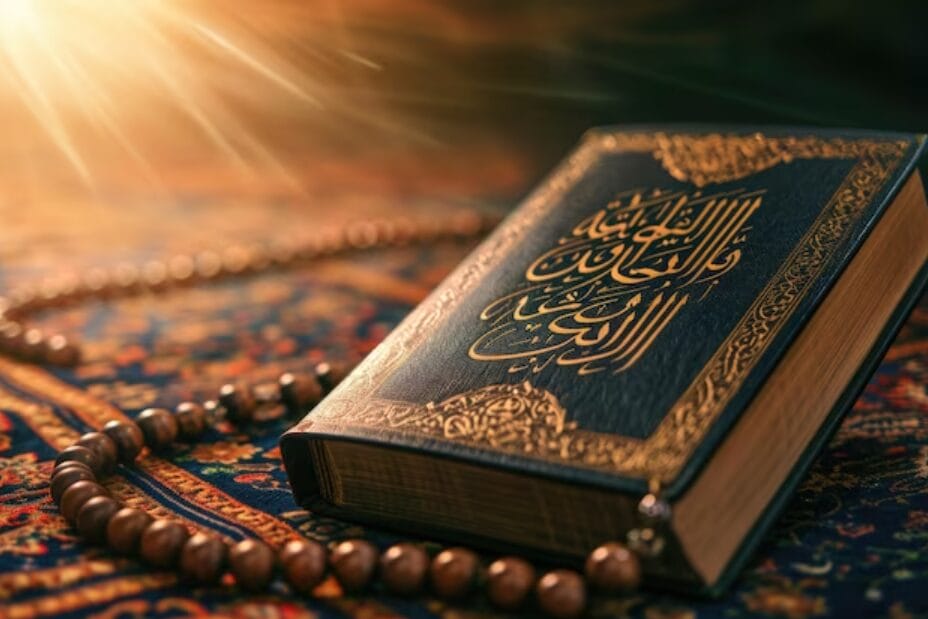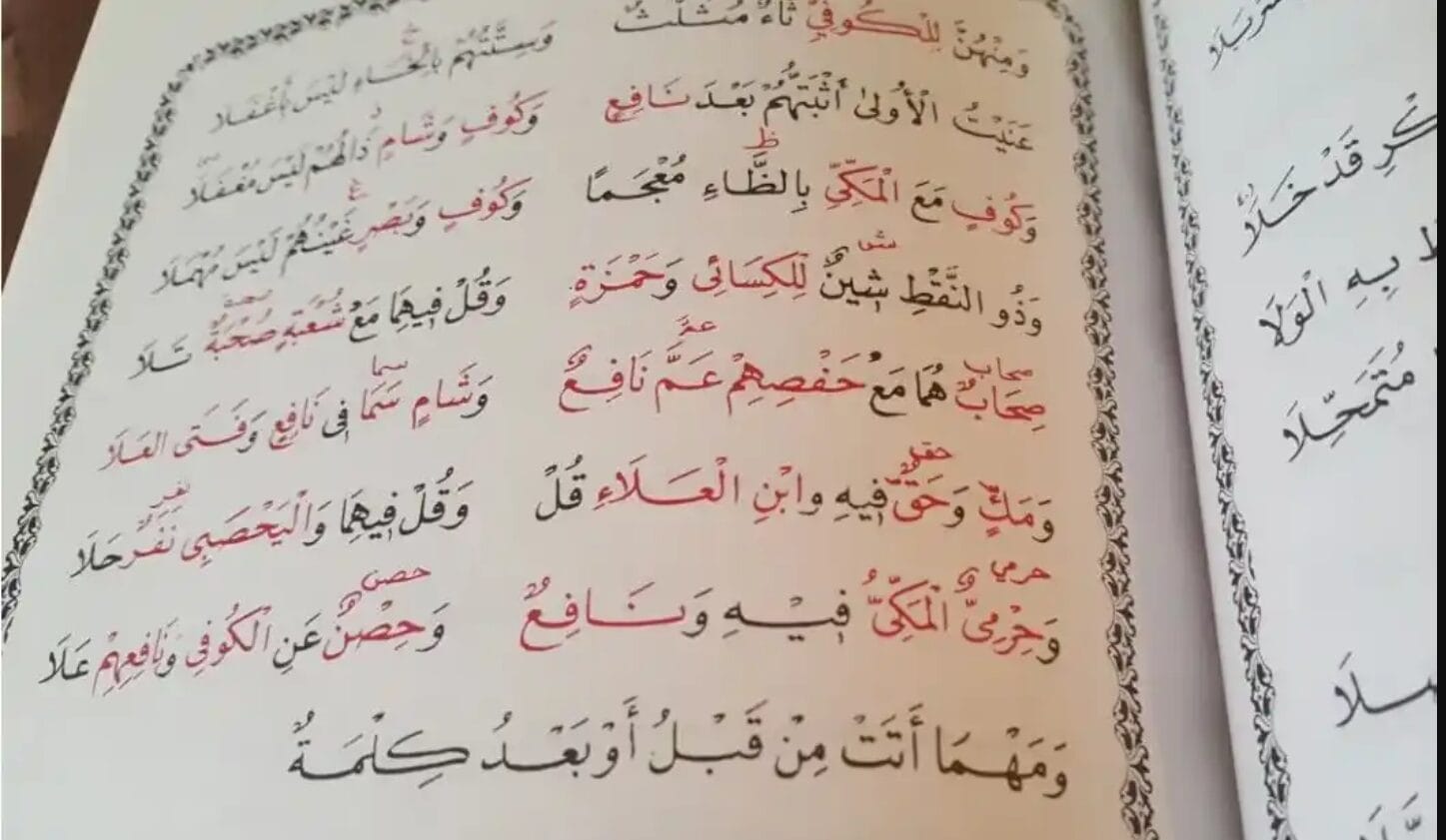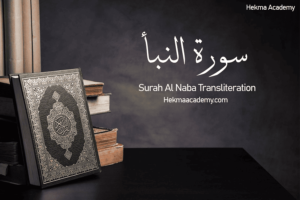The Quran is more than just a book; it’s a divine melody. At its core is the art of qiraat, the various ways to recite the Quran. Ever wondered about these different styles? Let’s explore the beauty and depth of qiraat together.
Key Takeaways
- Qiraat is the art of reciting the Quran with proper pronunciation and intonation, known as Tajweed.
- The importance of qiraat lies in preserving the authenticity and understanding of the Quranic text.
- There are various types of qiraat, each with its own distinct style of recitation and transmission.
- Quranic recitation styles play a vital role in the spiritual journey of believers, connecting them to the divine message.
- Studying the different types of qiraat provides insights into the rich linguistic and cultural heritage of the Quran.
The Beauty of Qiraat: Unveiling Diverse Recitation Styles
The world of Qiraat shows us the beauty of melodic diversity. It’s a world where different styles of Quranic recitation come together. Each style has its own rhythm and recitation styles. This shows the creativity and spirituality in this practice.
Qiraat is like a symphony with many melodies that blend well together. The way Quranic recitation is done lets linguistic and cultural influences mix in. This makes it easier for Muslims worldwide to feel a strong spiritual connection to the divine message.
Embracing the Melodic Diversity of the Qur’an
The qari traditions in the Middle East and the soulful renditions in Southeast Asia show the creativity of Muslims. This variety is not just about language or region. It shows how the Qur’an connects with people from all walks of life.
Qiraat: A Symphony of Sacred Recitations
Listening to the different recitation styles of the Qur’an feels like being in a heavenly place. Each voice and interpretation adds to the sacred music. Together, they create a sound that is both beautiful and touching.
Appreciating the melodic diversity of the Qur’an is more than just listening to beautiful sounds. It’s a way to celebrate the richness and global nature of Islam. By respecting the qari traditions and recitation styles, we show the spiritual bond that goes beyond language and culture. This bond unites Muslims in their love for the divine word.
Understanding Qiraat and Ahruf
The Quran was given to the Prophet Muhammad (peace be upon him). It shows how diverse and flexible the Arabic language is. At its core, qiraat and ahruf highlight the different ways to read and understand the Quran.
Unraveling the Mysteries of Qiraat and Ahruf
Qiraat are the various ways to read the Quran, each giving a unique flavor. These linguistic variations were supported by the Prophet. They helped the Quran connect with different communities in the Arabian Peninsula.
Ahruf look at the many ways to express and read the Quran. This flexibility made sure the Quran’s message reached people from all backgrounds.
The Linguistic Tapestry of the Divine Revelation
Qiraat and ahruf show the Quran’s wisdom in meeting its followers’ needs. These linguistic variations enrich the modes of expression. They highlight the diversity in revelation, making the Quran’s message universal.
The qiraat and ahruf of the Quran have shaped its linguistic tapestry. They let the Quran touch the hearts of people worldwide.
The History of Qiraat
The history of Qiraat goes back to Prophet Muhammad (peace be upon him). In that time, the Quran was recited orally. The Prophet taught his companions how to say each word correctly. This kept the Quran’s text and pronunciation safe, starting the different Qiraat schools.
Tracing the Origins of Qiraat
As Islam spread, the way of reciting the Quran changed. Scholars and reciters created their own styles for saying certain letters and words. This led to different schools of Qiraat, each with its own rules and traditions.
From Oral Tradition to Diverse Schools of Recitation
The history of qiraat shows how important the oral tradition was. Over time, the need for standardization grew. Scholars from different places added to the variety of Quranic recitation styles we enjoy today.
The growth of Qiraat shows Muslims’ dedication to keeping the Quran pure and true. Exploring this history helps us value the different ways the Quran is recited. It motivates believers to aim for the best in their recitation.
Types of Qiraat
The Qur’an has been kept safe through different ways of reading, called qiraat. These ways show how various scholars and reciters (qaris) pronounced and spoke the Quran over time. Each qiraat has its own special traits, showing the wide range of languages and cultures in Islam.
The seven main qiraat, known as “Qira’at Al-Saba,” are from Imams Nafi’, Ibn Kathir, Abu ‘Amr, Ibn ‘Amir, Hamzah, Ya’qub, and Khalaf. These qiraat come from trusted stories passed down by many people. The qaris have kept them safe and accurate.
Each qiraat has its own special features, like:
- Ease and simplicity in recitation
- Elongation of vowels
- Clarity in pronunciation
- Unique vocalization and pauses
There are also other qiraat that are not as common or accepted as much, like those of Imam Duri and Shu’bah. These qiraat show the different ways of speaking and regional differences in the Islamic world. They add to the rich variety of how the Quran is read.
Studying and keeping these qiraat safe has always been key in Islam. It helps make sure the Qur’an’s message is passed on correctly and truly from one generation to another and across different places.
Quranic Orthography
Quranic orthography is more than just the words in the Quran. It’s an art that includes quranic orthography, tajweed, and the Arabic alphabet. These elements work together to make sure the Quran is read correctly.
The Arabic alphabet has 28 letters and is the base of the Quran’s script. Each letter has its own shape, sound, and place in the words. Diacritical marks, or tashkeel, are key to knowing how to say each word right. They help reciters read the Quran with respect and accuracy.
The Art of Precise Quranic Articulation
Learning quranic orthography means understanding tajweed, the science of reading the Quran right. This knowledge helps reciters get the vowel sounds and letter sounds right. It also helps them move smoothly between Arabic alphabet characters. By using quranic orthography, reciters can make their reading more beautiful and true to the Quran.
Mastering the Nuances of the Arabic Script
Exploring quranic orthography is like uncovering the secrets of the divine language. It’s about noticing the small differences in letter shapes and where diacritical marks go. These details show the beauty and depth of the Quran. By understanding them, reciters can connect more deeply with the holy text.
The art of Qiraat, or the recitation of the Quran, is key to keeping the divine message true. It also deepens the spiritual bond between believers and their Creator. Each style of Qiraat has its own melody and way of saying the words, showing the rich heritage of Islam.
By celebrating this diversity, Muslims see the Quran’s beauty and how it touches people everywhere. The history of Qiraat shows a deep commitment to keeping the Quran’s true meaning. It also shows how it can change to fit the language and culture of different people.
Learning and practicing the different Qiraat helps Muslims stay connected to the Quran’s timeless wisdom. This keeps the tradition alive and helps people feel a strong spiritual bond. It’s how the Qiraat tradition keeps the Quran’s message alive for future generations.






